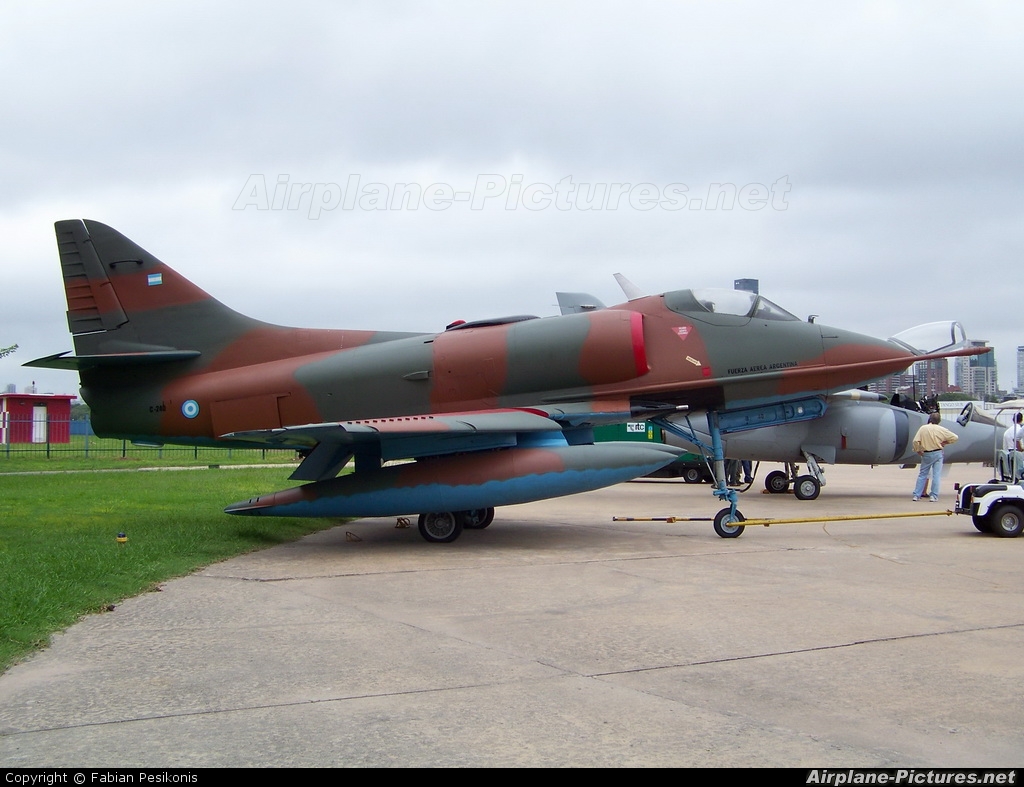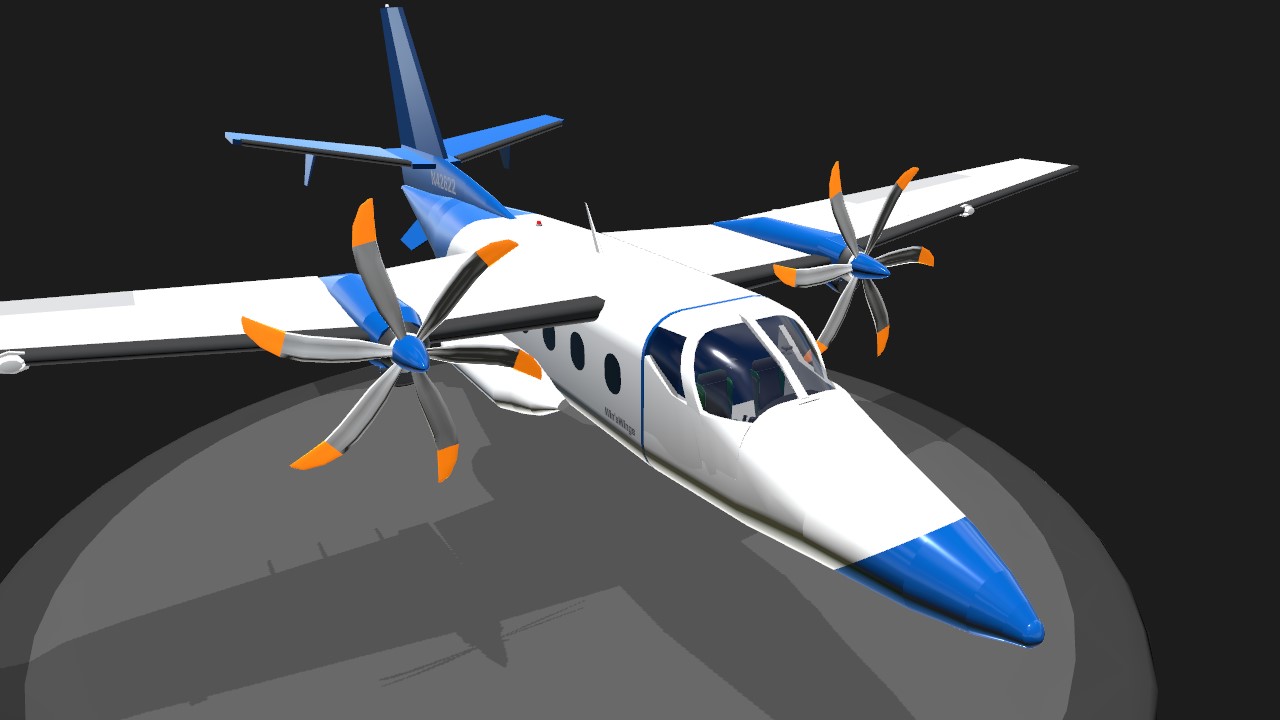C240 Aircraft - To meet the requirements of airlines for a pressurized airliner Convair produced a revised design, the Model 240. This had a longer but thinner fuselage than the Model 110, accommodating 40 passengers in the first pressurized twin-engined airliner.[4]
The 240 first flew on March 16, 1947.[5] The design began life in a requirement by American Airlines for an airliner to replace its Douglas DC-3s. Convair's original design, the unpressurised Model 110 was a twin-engined low-wing monoplane of all-metal construction, with 30 seats.
C240 Aircraft

It was powered by Pratt & Whitney R-2800 Double Wasp radial engines and had a tricycle landing gear and a ventral airstair for passenger boarding.[2] The prototype Model 110, registration NX90653 first flew on July 8, 1946.[2]
Design And Development
By this time, American had changed their requirements to require pressurization and deemed the design too small. The first prototype was used by Convair for development work for the 240 series before being broken up in 1947.[3]
The Cessna TTx T240's Electronic Stability and Protection (ESP) returns the aircraft to straight-and-level flight if there is excessive bank or if inordinately high pitch or descent rates occur. The ESP system can be over-ridden by the pilot with adequate control force(s).
The Cessna TTx T240 has a six-cylinder, fuel-injected, twin-turbocharged (with dual intercoolers) Continental TSIO-550-C engine that produces 310 horsepower at 2600 rpm. Spinning a three-blade, constant-speed McCauley propeller, the powerplant yields a true airspeed of 210 knots (389 km/h) and a fuel flow of 18 US gallons (68 L) per hour at a cruising altitude of 13,500 feet (4,115
m). Part of Cessna's engineering and certification process for the TTx T240 involved 171,000 cycles of fatigue testing of its composite airframe which was equal to approximately 120 years of service life. It is the only aircraft in its class to be certified by the Federal Aviation Administration (FAA) in the Utility category.

Garmin Electronic Stability And Protection Esp
FAA certification happened in July 2013. The Cessna TTx T240 is a fixed-gear, low-wing, general aviation (GA) airplane made of composite materials including carbon fiber and Nomex. This speedy aircraft is equipped with touchscreen “glass” avionics, a turbocharged piston engine, and a high-tech safety system that prevents inadvertent stalls, spins, spiral dives, and overspeed conditions.
The first delivery of a production Convairliner was to American on February 29, 1948.[5] A total of 75 were delivered to American, with another 50 going to Western Airlines, Continental Airlines, Pan American Airways, KLM, Swissair, Sabena and Trans Australia Airlines.[8]
The Cessna TTx T240's Engine Indication System, or EIS, displays a full suite of information on the G2000 multi-function display including manifold pressure, propeller speed, oil pressure and temperature, fuel quantity and flow, cylinder head and turbine inlet temperatures, and electrical.

system voltage and amperage. The Model 240 was followed by the Model 340 that had a longer fuselage, longer-span wings and more powerful engines. The 340 first flew on October 5, 1951.[6] In 1954, in an attempt to compete with turboprop-powered airliners like the Vickers Viscount, Convair produced the Model 440 Metropolitan, with more streamlined cowlings, new engine exhausts and better soundproofing for the cabin.[7]
Cessna Ttx T Specifications
As the "Super 240" evolved into the CV-340 and CV-440, the limit of piston-engine performance was reached, and future development centered on conversion to turboprop power.[1] Standard equipment on the Cessna TTx T240 includes speedbrakes, a L3 Trilogy backup instrument, an Artex two-frequency emergency locator transmitter, and an Intrinzic™ flight deck powered by Garmin G2000 avionics.
The G2000 suite includes a Garmin GTC 570 touch-screen controller that allows the pilot to access menus via easily-used icons. A CV-240 was the first private aircraft used in a United States presidential campaign. In 1960, John F. Kennedy used a CV-240 named Caroline (after his daughter) during his campaign.

This aircraft is now preserved in the National Air and Space Museum. After aborted negotiations with TWA and Eastern for "Super 240" orders, the production of the 240 series was temporarily halted. In response to a United inquiry, however, Convair redesigned the Super 240, calling it the CV-340.
United ordered 55, and more US orders came from Braniff, Continental, Delta, Northeast and National. Other orders came from abroad, and the CV-340 proved popular in South America. The CV-340 earned an enviable reputation for reliability and profitability, and was developed into the CV-440 Metropolitan, the final piston-engined variant of the "Convairliners."[1]
Cessna Ttx Certification
The Convair CV-240 was an American airliner produced by Convair from 1947 to 1954, initially as a possible replacement of the ubiquitous Douglas DC-3. While featuring a more modern design, the 240 series was able to make some inroads as a commercial airliner and also had a long development cycle which resulted in a number of civil and military variants.
Although reduced in numbers through attrition, the "Convairliners" in various forms continue to fly into the 21st century.[1] A new Lancair company, Pacific Aviation Composites USA, was established in Redmond, Oregon in April of 1995 and subsequently renamed Lancair Certified (LC).
In 2005, LC became the Columbia Aircraft Manufacturing Corporation, which was bought by the Cessna Aircraft Company in November 2007.
c240 airplane, convair 240, convair 240 plane, cv 240 convair airplane, cessna 240 aircraft, cessna c240, 1948 convair 240 airplane, convair 240 caroline
